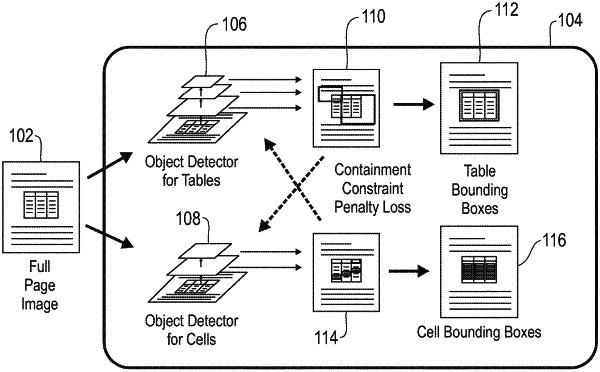| CPC G06N 3/088 (2013.01) [G06N 3/045 (2023.01); G06N 3/082 (2013.01)] | 14 Claims |

|
1. A computer-implemented method comprising:
dividing a processing task into multiple sub-tasks;
training multiple independent neural networks, wherein each of the multiple sub-tasks corresponds to a respective one of the multiple independent neural networks, wherein training comprises training the multiple independent neural networks such that each of the multiple independent neural networks detects at least two types of objects, wherein the at least two types of objects have at least one spatial relationship with each other, and wherein the at least one spatial relationship comprises at least one containment relationship;
defining, based at least in part on constraint-based domain knowledge related to the processing task, at least one constraint loss for a given one of the multiple sub-tasks, said at least one constraint loss being dependent on output from at least one of the other multiple sub-tasks; and
re-training at least a portion of the multiple independent neural networks, wherein said re-training comprises incorporating the at least one constraint loss into at least one of the multiple independent neural networks, in view of the at least one spatial relationship being violated between one or more outputs of the at least one neural network and at least a portion one or more other of the multiple independent neural networks for any given input;
wherein the method is carried out by at least one computing device.
|